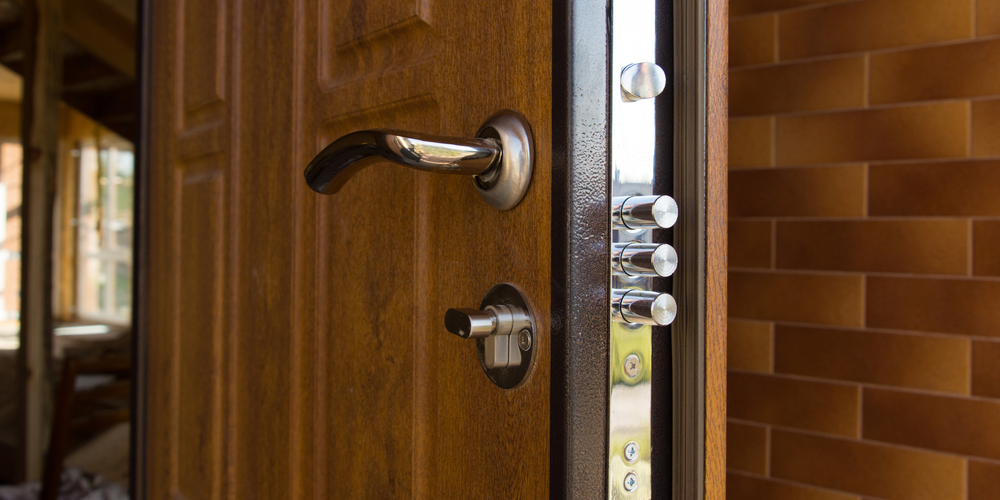Though an alarm system or a guard dog may be helpful, locksmiths say a quality deadbolt is the best resistance to a home burglary. In most cases, Intruders use force to gain entry into a home. A deadbolt has a steel bolt that extends into the door jamb and strike plate of the door frame that makes the door harder to enter with force. If your deadbolts are used and working properly, this makes your home a less desirable target.
The three basic parts of a deadbolt lock are a key accessible cylinder on the outside, the throw or bolt that slides in and out of the door jamb and the thumb turn that allows for manual control of the bolt from the inside of the home. All deadbolt locks should be made of steel, bronze or brass. Avoid die cast materials which can break apart.
Types Of Deadbolts
Single Cylinder
The most common type of deadbolt used is a single cylinder that operates with a twist knob on the inside of the door and a keyhole on the outside. The bolt is “dead” because you have to manually move it in and out of place by means of a key or knob. This can still be breached if an entry door has glass panels since an intruder can break the glass and open the deadbolt from the inside.
Double Cylinder
An intruder will not be able to reach in to open the door through a broken glass panel if you have a double cylinder deadbolt. This is the most secure type of deadbolt because it requires a key to operate it on both sides of the door. Some people prefer not to use the double cylinder deadbolt due to the safety concerns of exiting the home in the event of a fire. If the deadbolt is in the locking position, a key would be required to exit which may deter a quick exit or concern if the key is lost. If you do choose to use a double cylinder deadbolt system, keep a key close by but out of arm’s reach of the door area. It’s important to note that before choosing a deadbolt, know that some fire safety and building codes forbid the installation of locks that require keys to open the door from the inside. Consult with a local contractor or locksmith before installing one.
Regarding the throw (bolt) part of the deadbolt system, consider the difference in security risk between a horizontal and vertical throw.
Horizontal Throw
The standard horizontal throw extends one inch beyond the edge of the door and into the jamb. This may not be enough to support the door and frame from a forced entrance by an intruder who can pry the door apart from the jamb or it’s strike plate to disengage the throw.
Vertical Throw
A vertical or surface mounted deadbolt engages by interlocking with a set of cast metal rings affixed to the frame of the door. The rings surrounding the bolt make this lock virtually pry-proof making a vertical throw the safer choice of the two deadbolts.


Picture Source
http://united-locksmith.net/blog/how-deadbolts-play-a-role-in-keeping-your-home-safe-and-secure


Leave a Reply